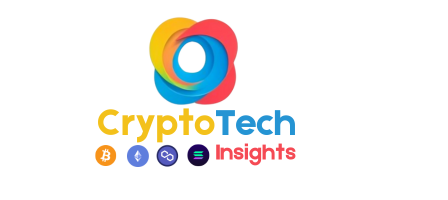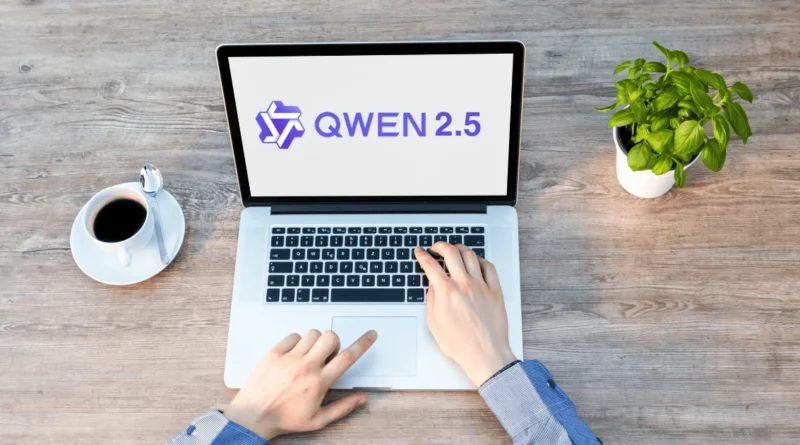Unveiling Qwen 2.5: Alibaba’s Leap in AI Innovation in 2025
Table of Contents
In the rapidly evolving landscape of artificial intelligence, Alibaba Cloud has made significant strides by introducing Qwen 2.5, a new generation of large language models (LLMs). Here’s a comprehensive look at what Qwen 2.5 is and why it’s garnering attention in the tech community.
What is Qwen 2.5?
Qwen 2.5 is a series of open-source LLMs developed by Alibaba Cloud, designed to push the boundaries of AI applications in natural language processing, coding, and mathematical reasoning. This suite of models is notably versatile, with sizes ranging from 0.5 billion to 72 billion parameters, catering to a wide array of computational needs:
- Model Sizes: Available in multiple sizes (0.5B, 1.5B, 3B, 7B, 14B, 32B, and 72B parameters), making it adaptable from edge devices to enterprise-level infrastructures.
- Training Data: Trained on a massive dataset of up to 18 trillion tokens, ensuring a broad conceptual understanding and nuanced responses.
- Context Length: Supports up to 128,000 tokens for context, which is particularly beneficial for handling long-form content or multi-step tasks.
- Multilingual Capabilities: Supports over 29 languages, enhancing its utility in global applications.
- Specialized Variants: This includes models like Qwen2.5-Coder, which excels in code generation, analysis, and debugging, and Qwen2.5-Math, which is tailored for mathematical problem-solving.
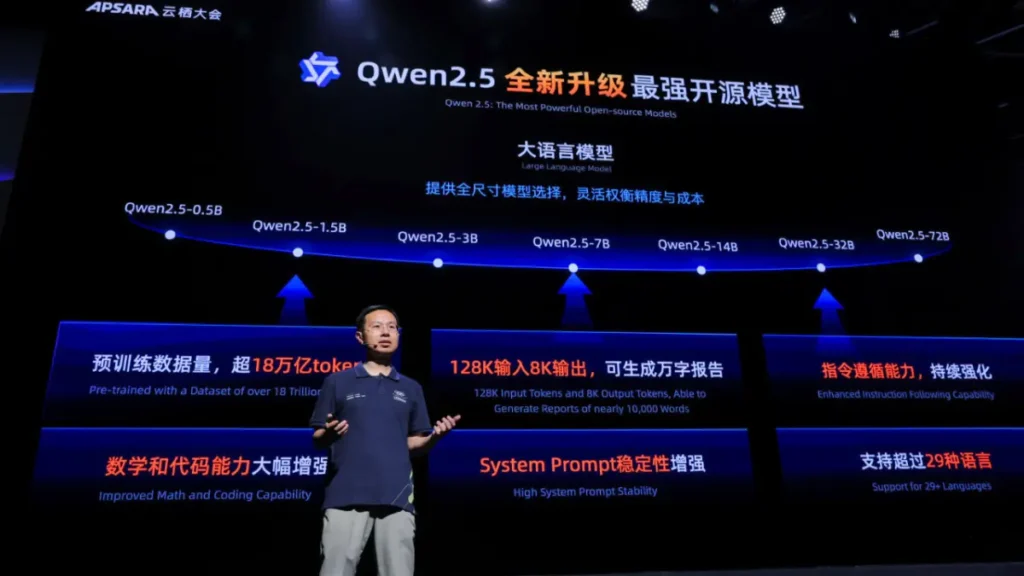
Technical Advancements
The Qwen 2.5 series introduces notable technical improvements over its predecessors. The model family includes various sizes, from the compact 7B parameters to the more powerful 72B parameters version, catering to different use cases and computational requirements. What sets Qwen 2.5 apart is its enhanced training methodology, which incorporates:
- Improved context window handling, allowing for processing of longer text sequences
- Advanced reasoning capabilities through refined instruction tuning
- Enhanced multilingual understanding and generation
- Better performance in complex coding tasks and mathematical reasoning
Performance Benchmarks
One of the primary reasons for Qwen 2.5’s rising popularity is its impressive performance on various benchmarks. The model has shown competitive results against other leading AI models in:
- General knowledge and reasoning tasks
- Code generation and completion
- Mathematical problem-solving
- Cross-lingual understanding and translation
- Complex instruction following
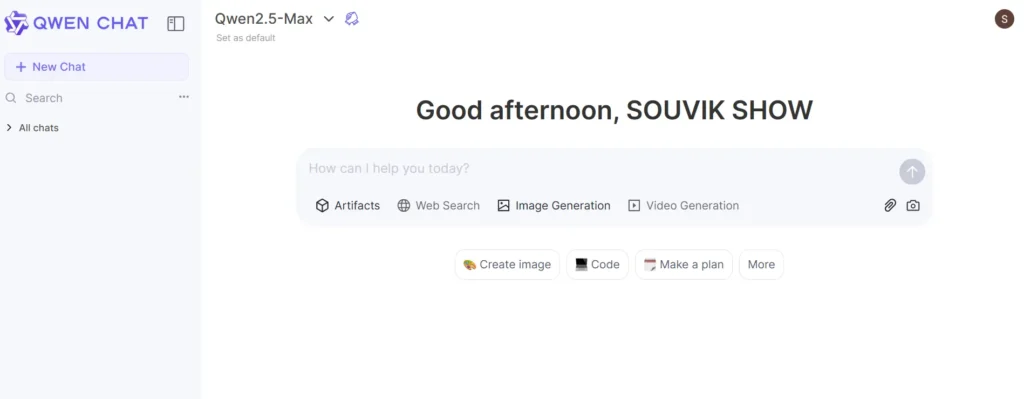
Features That Drive Popularity
1. Coding Prowess:
- Qwen 2.5 has been particularly acclaimed for its coding capabilities. It generates code and offers insights into coding practices, project structure analysis, and optimization, which is a significant boon for developers. It supports 92 programming languages and has been fine-tuned on 5.5 trillion tokens of code-related data.
2. Mathematical Reasoning:
- Models like Qwen2.5-Math, tackle complex mathematical problems with high accuracy, suitable for educational tools or scientific research.
3. Multilingual Support:
- Its ability to process and generate content in multiple languages makes it a powerful tool for businesses looking to operate internationally without language barriers.
4. Long Context Handling:
- The extended context length allows for in-depth analysis and processing of large documents or long conversational contexts, reducing the need for repetitive prompting or context loss.
5. Open Source and Community Engagement:
- By making most of its models open-source under the Apache 2.0 license, Alibaba encourages a community-driven approach to AI development. This openness has fostered numerous derivative models and community contributions, enhancing its functionality and reach.
6. Performance Benchmarking:
- Qwen 2.5 has outperformed several competitors in various benchmarks, particularly in coding and mathematical reasoning tasks. It has been celebrated for its efficiency, even on resource-constrained devices.
Why Qwen 2.5 is Gaining Fame
- Community and Developer Adoption: The active GitHub repository and forums filled with developers’ positive experiences highlight its growing acceptance in the developer community. The model’s compatibility with popular frameworks like Hugging Face Transformers has further accelerated its adoption.
- Practical Applications: From automating customer service through chatbots to aiding in complex data analysis, Qwen 2.5’s practical applications are vast, making it a go-to choice for businesses looking for AI solutions.
- Innovative Edge: Introducing features like 1 million token context length models (Qwen2.5-1M) showcases Alibaba’s commitment to pushing AI capabilities, drawing attention from tech enthusiasts and professionals alike.
- Competitive Benchmarking: Its performance compared to other leading models like GPT-4o and DeepSeek V3 in various benchmarks has positioned Qwen 2.5 as a formidable player in the AI market, especially noted in posts on platforms like X.
- Strategic Release Timing: Launching during significant times like the Lunar New Year or with surprise releases has created a buzz, effectively capturing the tech community’s interest.
Future Implications
The success of Qwen 2.5 signals several important trends in the AI industry:
- The growing importance of efficient, versatile AI models that can serve multiple purposes
- The value of open-source collaboration in advancing AI technology
- The emergence of strong AI capabilities from Asian technology companies
- The increasing focus on models that can handle multiple languages and cultural contexts effectively
Challenges and Considerations
Despite its success, Qwen 2.5 faces several challenges:
- Competition from other major AI models and companies
- The need for continued improvement in specialized domain knowledge
- Balancing computational efficiency with model performance
- Addressing potential ethical considerations and biases in AI systems
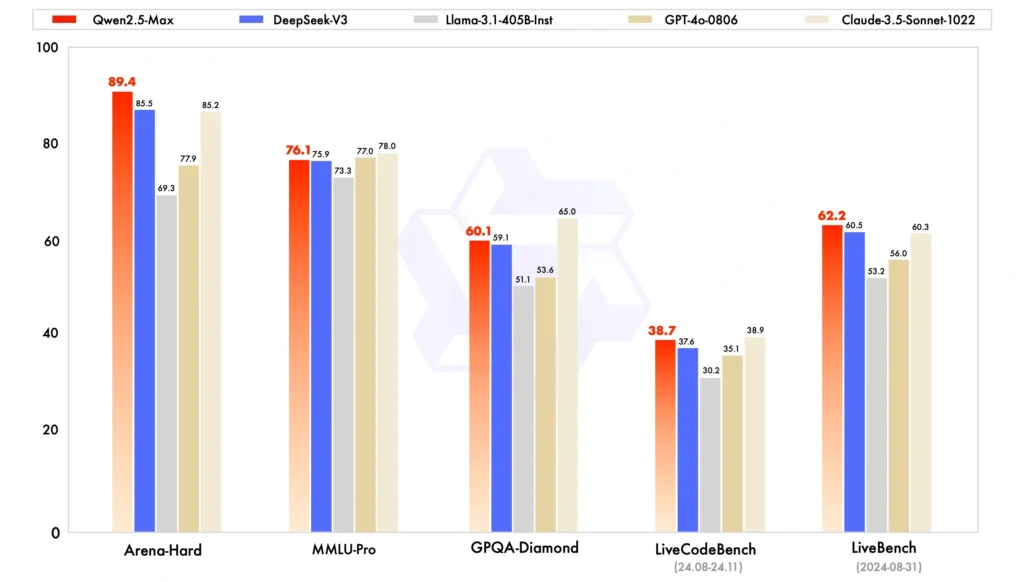
compare Qwen 2.5 with others
Comparative Analysis: Qwen 2.5 vs Other Leading AI Models
In the competitive landscape of artificial intelligence, especially in the domain of large language models (LLMs), Alibaba’s Qwen 2.5 has emerged as a significant contender. Here, we compare Qwen 2.5 with several other prominent AI models across various dimensions:
General Performance and Benchmarks
Qwen 2.5 vs GPT-4o (OpenAI):
- Coding: Qwen 2.5-Coder has been shown to match or even outperform GPT-4o in coding benchmarks like Livebench. It supports 92 programming languages and has been fine-tuned on extensive code datasets.
- General Tasks: While both models are versatile, Qwen 2.5 has been noted for its performance in general understanding and reasoning, sometimes surpassing GPT-4o in specific areas due to its training on a diverse dataset of up to 18 trillion tokens.
- Context Length: Qwen 2.5 supports up to 128,000 tokens, providing a significant edge in processing long documents or maintaining complex dialogues compared to GPT-4o’s capabilities.
Qwen 2.5 vs. DeepSeek V3:
- Efficiency: DeepSeek V3 is known for its impressive efficiency, achieving high performance with fewer resources, but Qwen 2.5-Max has been reported to outperform it in several benchmarks including Arena Hard, LiveBench, and LiveCodeBench, particularly in coding and math tasks.
- Model Size and Accessibility: Qwen 2.5 offers a wider range of model sizes, making it more accessible for different computational environments, while DeepSeek’s models might be more resource-specific.
Qwen 2.5 vs. Claude 3.5 Sonnet (Anthropic):
- Creative Writing: Qwen 2.5 lags slightly behind in creative writing tasks, whereas Claude 3.5 Sonnet excels. However, in coding and technical tasks, Qwen 2.5-Coder has shown competitive or superior performance.
- Cost and Deployment: Qwen 2.5 is noted for its cost-efficiency, especially with models like Qwen2.5-14B and Qwen2.5-32B, making it a more affordable choice for businesses compared to the potentially higher costs associated with Claude 3.5 Sonnet.
Qwen 2.5 vs. Llama 3.1 (Meta):
- Math and Coding: Qwen 2.5 has been reported to outperform Llama 3.1 in mathematical reasoning and coding tasks, even with a smaller parameter count in some cases.
- Open-source vs. Proprietary: Qwen 2.5’s open-source nature gives it an edge over Llama 3.1, which has had mixed approaches to open-source in the past, in terms of developer customization and community-driven improvements.
Specialization and Use-Cases
- Coding: Qwen 2.5-Coder is particularly strong, offering capabilities in code generation, debugging, and understanding across a vast number of programming languages, making it a preferred choice for developers.
- Mathematical Reasoning: Qwen 2.5-Math models are specialized for mathematical tasks, providing high accuracy in benchmarks like GSM8K and MMLU-STEM, which are critical for educational and scientific applications.
- Multilingual Support: Qwen 2.5’s proficiency in over 29 languages gives it an advantage in global applications, potentially more than some models that might focus more on English or a fewer number of languages.
Accessibility and Licensing
- Open-Source Models: Most Qwen 2.5 models are available under the Apache 2.0 license, promoting broader use and development within the community. This contrasts with models like those from OpenAI, which might require API access or have different licensing for commercial use.
- Pricing and Scalability: Qwen 2.5 offers scalability with different model sizes, providing flexibility in deployment across various computational environments, from cloud to edge devices. This scalability can be more cost-effective for businesses than models that might scale less efficiently or at higher costs.
Conclusion
Qwen 2.5 by Alibaba Cloud represents not just an advancement in AI technology but also a strategic move to democratize AI capabilities through open-source initiatives. Its growing fame is a testament to its robust design, practical utility, and the active engagement of a global developer community. As AI continues to weave into the fabric of technology, models like Qwen 2.5 are pivotal in shaping how we interact with and leverage AI in everyday applications.
FAQs about Qwen 2.5
-
What is Qwen 2.5?
Qwen 2.5 is a series of large language models (LLMs) developed by Alibaba Cloud, designed for natural language understanding, coding, and mathematical reasoning. It comes in various sizes from 0.5 billion to 72 billion parameters.
-
How many languages does Qwen 2.5 support?
Qwen 2.5 supports over 29 languages, making it highly versatile for global applications.
-
What makes Qwen 2.5 different from other AI models?
Its unique selling points include specialized models for coding (Qwen2.5-Coder) and math (Qwen2.5-Math), a very long context length up to 128,000 tokens, and its open-source nature, allowing for community-driven enhancements.
-
Can Qwen 2.5 be used on edge devices?
Yes, with models like Qwen2.5-0.5B and Qwen2.5-1.5B, it’s designed to run on devices with limited computational power, making it suitable for edge computing.
-
Is Qwen 2.5 free to use?
The majority of Qwen 2.5 models are open-source under the Apache 2.0 license, meaning they are free to use, modify, and distribute, but for commercial use, you should review the license terms.
-
How does Qwen 2.5 compare to GPT-4o in terms of coding capabilities?
Qwen 2.5-Coder has shown to either match or outperform GPT-4o in coding benchmarks, particularly in areas like code generation, debugging, and understanding.
-
Which model is better for mathematical tasks, Qwen 2.5 or DeepSeek V3?
Qwen 2.5, particularly its Qwen2.5-Math variant, has demonstrated superior performance in mathematical benchmarks compared to DeepSeek V3.
-
Is Qwen 2.5 more cost-effective than Claude 3.5 Sonnet?
Generally, Qwen 2.5 could be considered more cost-effective due to its open-source nature and the availability of smaller, less resource-intensive models that still perform well.
-
How does Qwen 2.5 stack up against Llama 3.1 in terms of language support?
Qwen 2.5 supports more languages (over 29) compared to Llama 3.1, offering a broader multilingual capability for international applications.
-
Can Qwen 2.5 handle longer context windows compared to other models?
Yes, Qwen 2.5 supports a context length of up to 128,000 tokens, which is notably longer than many contemporary models, allowing for more in-depth analysis of documents or conversations.
